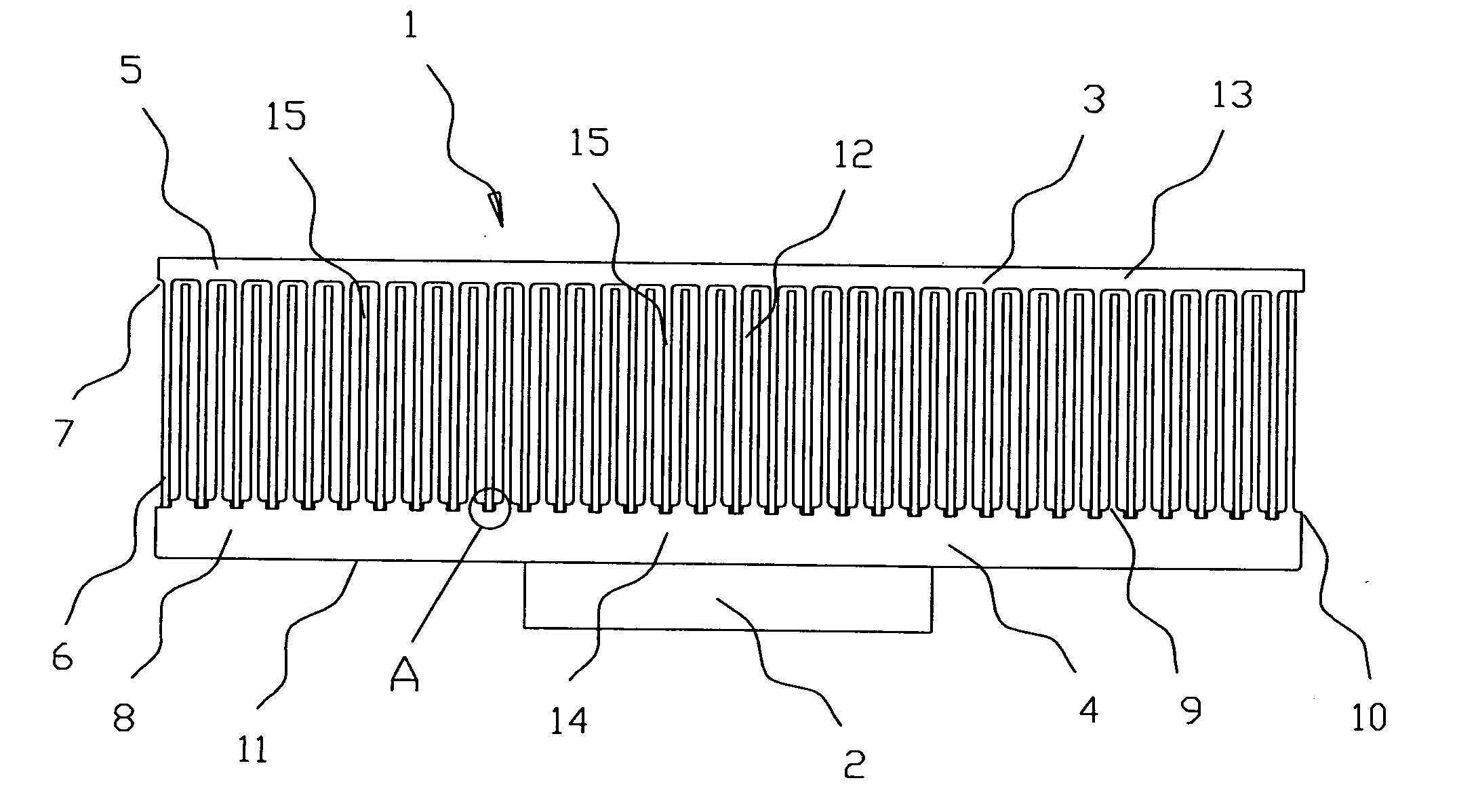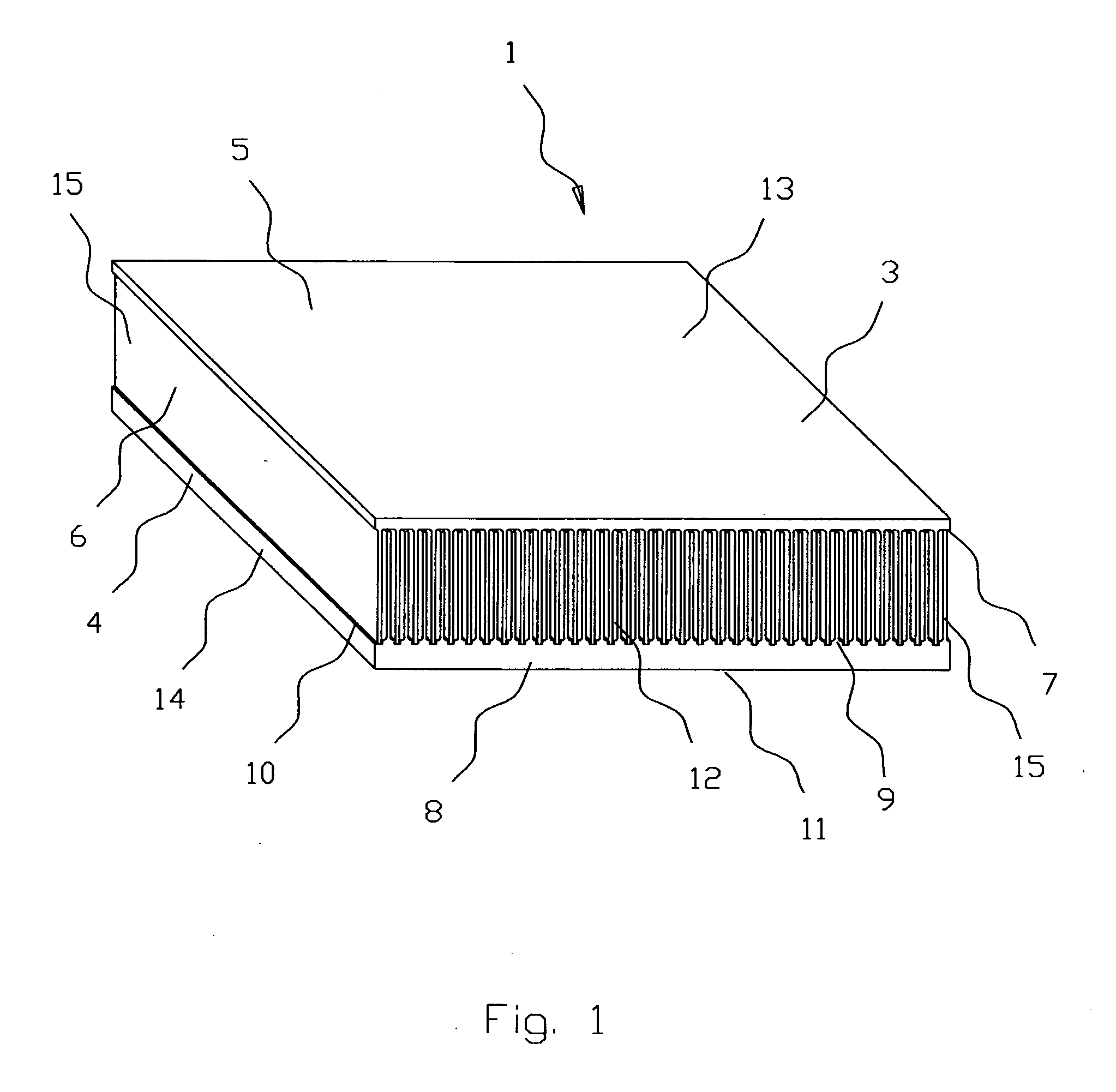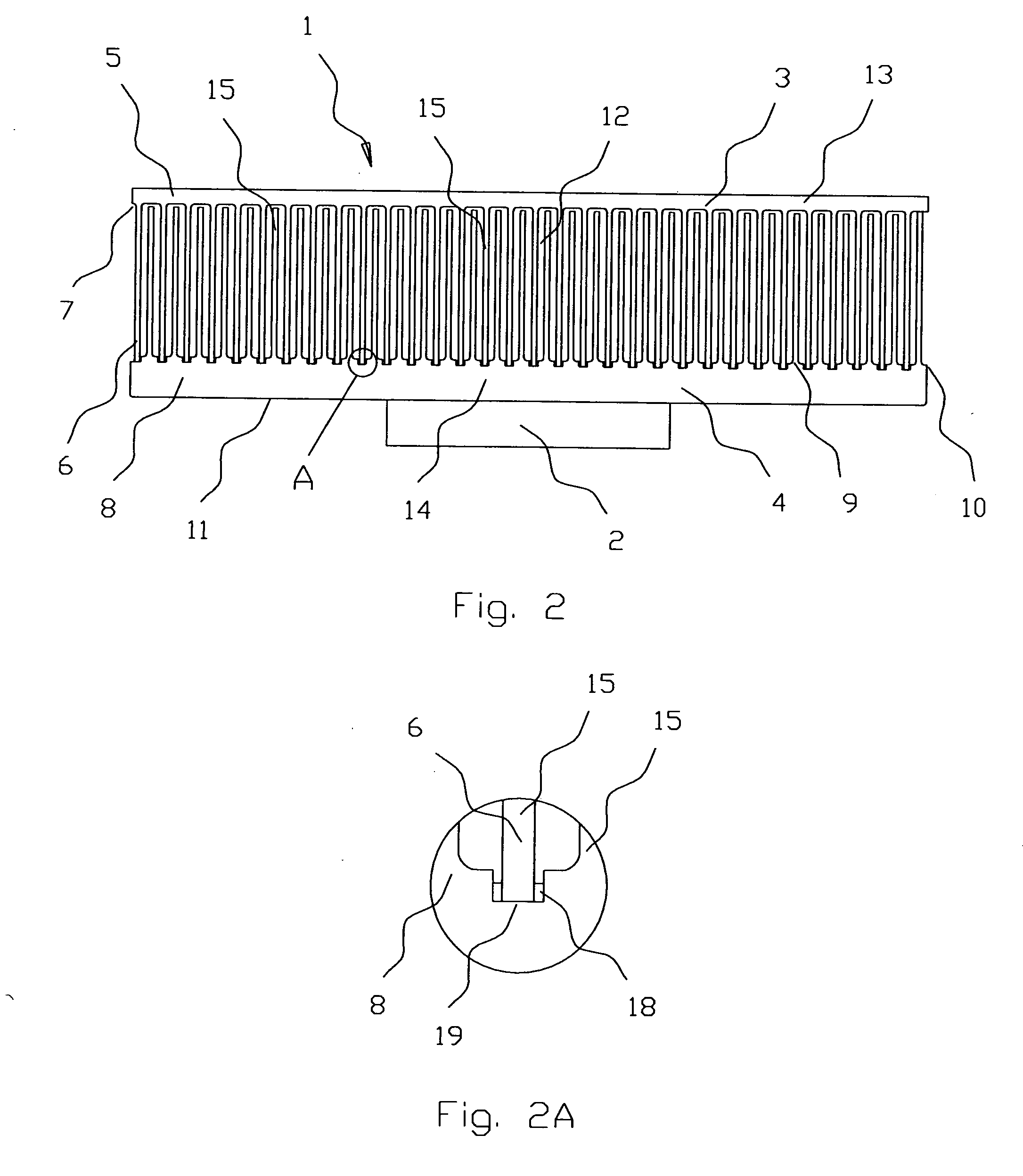Composite heatsink for cooling of heat-generating element
a heat-generating element and heat-sink technology, applied in the field of heat-sinks, can solve the problems of premature device failure, reduced heat-removal cooling system effectiveness, and insufficient effectiveness of traditional heat-removal cooling system
- Summary
- Abstract
- Description
- Claims
- Application Information
AI Technical Summary
Benefits of technology
Problems solved by technology
Method used
Image
Examples
Embodiment Construction
[0021] Preferred embodiment of the present invention will be described in detail below with reference to the accompanying drawings. FIGS. 1-4 show embodiment of the present invention.
[0022] A composite heatsink 1 (FIG. 1-2) for cooling of heat-generating element 2 comprises upper 3 and lower 4 components. The upper component 3 (FIG. 3) comprises a cover plate 5 and a first set 6 of heat-exchanging means thermally connected with one side 7 of the cover plate 5.
[0023] The lower component 4 (FIG. 4) comprises a base 8 and a second set 9 of heat-exchanging means thermally connected with one side 10 of the base 8 while the other side 11 of the base 8 thermally connected with the heat-generating element 2. The first set 6 of heat-exchanging means located in alternate order in respect to the second set 9 of heat-exchanging means and thermally connected with the base 8 from a side 10 opposite to the heat-generating element 2, thus forming a plurality of heat exchange channels 12.
[0024] A...
PUM
 Login to View More
Login to View More Abstract
Description
Claims
Application Information
 Login to View More
Login to View More - R&D
- Intellectual Property
- Life Sciences
- Materials
- Tech Scout
- Unparalleled Data Quality
- Higher Quality Content
- 60% Fewer Hallucinations
Browse by: Latest US Patents, China's latest patents, Technical Efficacy Thesaurus, Application Domain, Technology Topic, Popular Technical Reports.
© 2025 PatSnap. All rights reserved.Legal|Privacy policy|Modern Slavery Act Transparency Statement|Sitemap|About US| Contact US: help@patsnap.com



